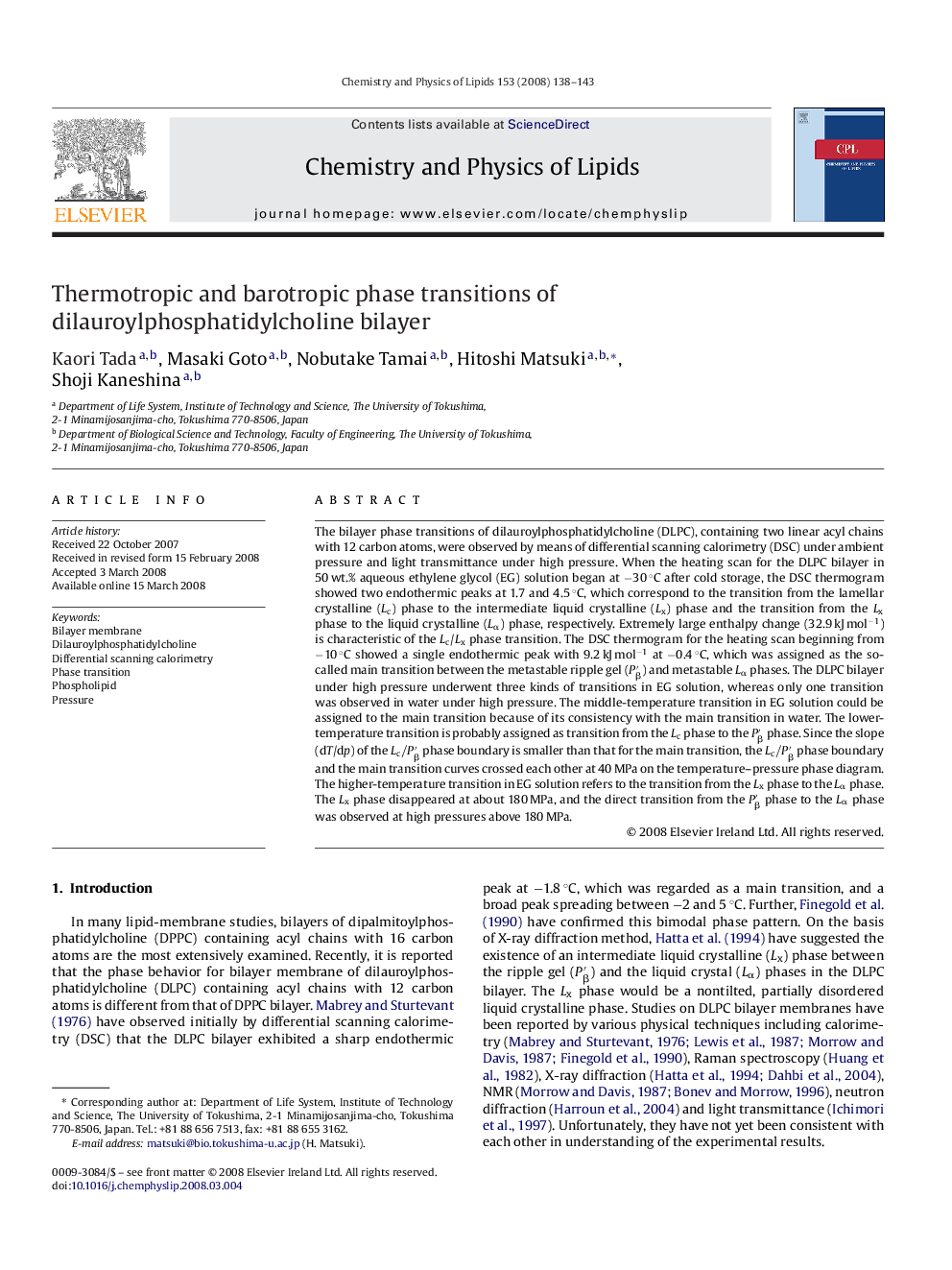| Article ID | Journal | Published Year | Pages | File Type |
|---|---|---|---|---|
| 1252477 | Chemistry and Physics of Lipids | 2008 | 6 Pages |
Abstract
The bilayer phase transitions of dilauroylphosphatidylcholine (DLPC), containing two linear acyl chains with 12 carbon atoms, were observed by means of differential scanning calorimetry (DSC) under ambient pressure and light transmittance under high pressure. When the heating scan for the DLPC bilayer in 50 wt.% aqueous ethylene glycol (EG) solution began at â30 °C after cold storage, the DSC thermogram showed two endothermic peaks at 1.7 and 4.5 °C, which correspond to the transition from the lamellar crystalline (Lc) phase to the intermediate liquid crystalline (Lx) phase and the transition from the Lx phase to the liquid crystalline (Lα) phase, respectively. Extremely large enthalpy change (32.9 kJ molâ1) is characteristic of the Lc/Lx phase transition. The DSC thermogram for the heating scan beginning from â10 °C showed a single endothermic peak with 9.2 kJ molâ1 at â0.4 °C, which was assigned as the so-called main transition between the metastable ripple gel (Pâ²Î²) and metastable Lα phases. The DLPC bilayer under high pressure underwent three kinds of transitions in EG solution, whereas only one transition was observed in water under high pressure. The middle-temperature transition in EG solution could be assigned to the main transition because of its consistency with the main transition in water. The lower-temperature transition is probably assigned as transition from the Lc phase to the Pâ²Î² phase. Since the slope (dT/dp) of the Lc/Pâ²Î² phase boundary is smaller than that for the main transition, the Lc/Pâ²Î² phase boundary and the main transition curves crossed each other at 40 MPa on the temperature-pressure phase diagram. The higher-temperature transition in EG solution refers to the transition from the Lx phase to the Lα phase. The Lx phase disappeared at about 180 MPa, and the direct transition from the Pâ²Î² phase to the Lα phase was observed at high pressures above 180 MPa.
Keywords
Related Topics
Physical Sciences and Engineering
Chemistry
Chemistry (General)
Authors
Kaori Tada, Masaki Goto, Nobutake Tamai, Hitoshi Matsuki, Shoji Kaneshina,
